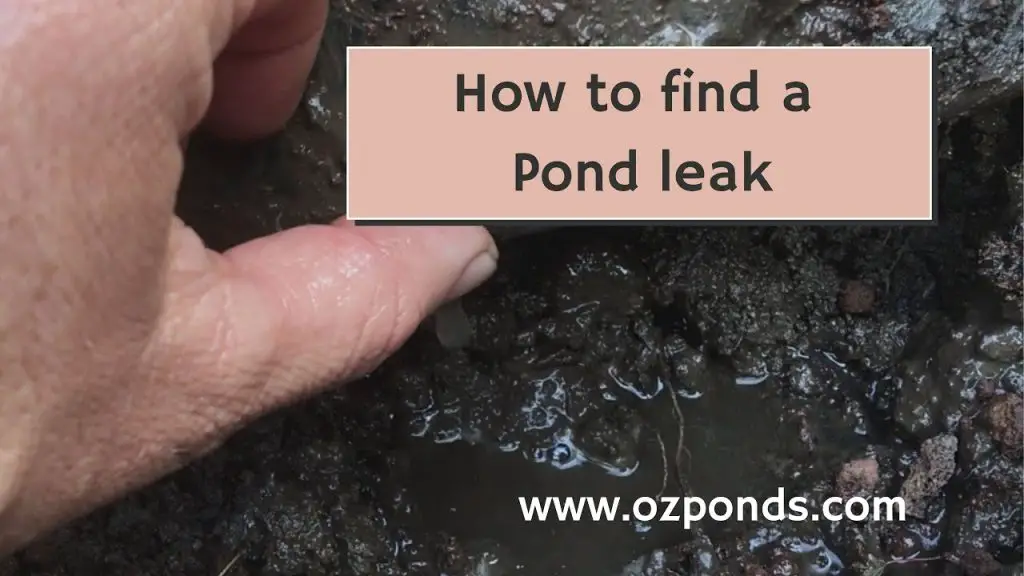Having a beautiful pond in your backyard can bring tranquility and enhance the overall aesthetic appeal of your outdoor space. However, one of the common issues that pond owners face is a leak. A leak in your pond can not only lead to water loss but also impact the health of your aquatic plants and fish. In this guide, we will discuss how to find a pond leak effectively so that you can address the issue promptly and restore the beauty of your pond.
Signs of a Pond Leak
Before you start the process of finding a leak in your pond, it is essential to look out for some common signs that indicate a leak:
- Noticeable decrease in water level
- Wet or soggy patches around the pond area
- Unexplained increase in water bill
- Algae growth in areas where it shouldn’t be

Credit: m.youtube.com
Step-by-Step Guide to Finding a Pond Leak
Follow these steps to identify and locate a leak in your pond:
Step 1: Check The Water Level
Begin by filling your pond to its normal level and marking the waterline. Monitor the water level for 24 hours to see if there is a noticeable drop.
Step 2: Inspect The Pond Liner
Examine the pond liner for any visible tears, holes, or damage. Pay close attention to the areas around rocks, pipes, and waterfall features as these are common locations for leaks.
Step 3: Conduct A Dye Test
Add a few drops of food coloring or a pond leak detection dye into the water. Observe the color to see if there are any concentrated areas where the dye is being pulled out of the pond.
Step 4: Use A Bucket Test
Place a bucket filled with water on the top step of your pond. Ensure the water level inside the bucket matches the water level of the pond. Mark the water level inside the bucket and check after 24 hours. If the water level inside the bucket drops more than the pond’s water level, there is a leak.
Step 5: Inspect The Pump And Plumbing
Check the pump and plumbing connections for any signs of leakage. Tighten connections and replace seals if necessary. Sometimes, leaks can occur in the plumbing system rather than the pond itself.
Step 6: Soil Moisture Test
Use a soil moisture meter to check the moisture levels around the pond. If the soil is excessively wet in areas where it shouldn’t be, it could indicate a leak.
Step 7: Call In Professionals
If you have tried the above steps and are still unable to locate the leak, it may be time to call in a professional pond leak detection service. They have specialized equipment to pinpoint the exact location of the leak without causing damage to your pond.
Preventing Pond Leaks
Once you have identified and fixed the leak in your pond, it’s essential to take preventive measures to avoid future leaks:
- Regularly inspect the pond liner for signs of wear and tear
- Ensure proper installation of the pond liner
- Monitor water levels regularly
- Use high-quality materials for pond construction
- Avoid placing sharp objects in the pond

Credit: www.motherearthnews.com
Conclusion
Having a leak in your pond can be a frustrating experience, but with the right approach, you can identify and fix the issue effectively. By following the steps outlined in this guide and taking preventive measures, you can enjoy a beautiful and leak-free pond for years to come.





